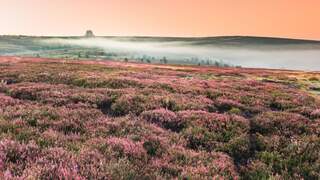Dartmoor is a wonderfully wild and exhilarating place, covering 386 square miles of South Devon. This iconic moorland is a playground for outdoor enthusiasts and a sanctuary for those seeking solitude and inspiration. Whether you’re looking for adventure or tranquillity, Dartmoor truly has something for everyone.
Adventure Awaits
Dartmoor offers a huge range of activities for visitors of all ages and interests:
- Cycling: Explore miles of scenic off-road trails and quiet country lanes, perfect for both casual cyclists and mountain biking enthusiasts.
- Horseback Riding: Experience the moors from a different perspective by riding along bridleways and open moorland, just as people have done for centuries.
- Kayaking: The rivers and reservoirs provide opportunities for kayaking and canoeing, offering a unique way to see the landscape.
- Wild Swimming: For the adventurous, Dartmoor’s clear rivers and hidden pools are perfect for a refreshing wild swim.
A Hiker's Paradise
But it’s the open, windswept upland moors that truly set Dartmoor apart. The landscape is characterised by:
- Vast expanses of grass and purple heather
- Mysterious peat blanket bogs and lush valley mires
- Staggering granite tors-dramatic rock outcrops that rise above the landscape and offer panoramic views
Walking here is both challenging and rewarding, with routes ranging from gentle strolls to demanding hikes over rugged terrain. The ever-changing weather adds a touch of drama, making every visit unique.
Steeped in History and Legend
Dartmoor is rich in history and myth, its wild landscapes inspiring countless writers and artists. The moors have featured in the works of:
- Arthur Conan Doyle (The Hound of the Baskervilles)
- Thomas Hardy
- Jane Austen
Ancient stone circles, mysterious standing stones, and medieval clapper bridges dot the landscape, adding to Dartmoor’s sense of timelessness and intrigue.
Wild Camping and Immersion
- Dartmoor is one of the few places in England where you can legally wild camp, allowing you to truly immerse yourself in the landscape.
- Spend a night under the stars, surrounded by the sounds of the moor, and wake up to misty mornings and the call of skylarks.
Why We Love It
- Dramatic, ever-changing scenery
- Endless opportunities for outdoor adventure
- Rich literary and historical connections
- The rare chance to wild camp in a truly wild setting
Dartmoor is a place where you can lose yourself in nature, challenge yourself with a hike, or simply sit and soak up the views. It’s a moorland that captures the imagination and stays with you long after you’ve left.










